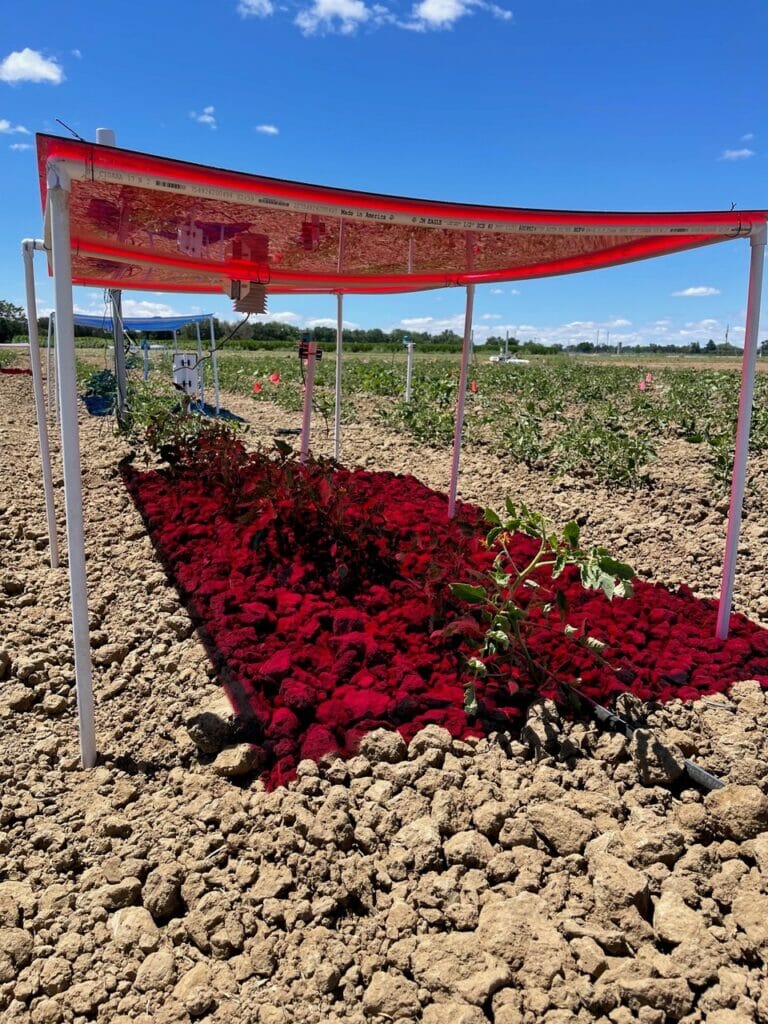 New Solar Panels Allow Farmers to See the Light. JAN 16, 2023 Naoki Nitta. Photography courtesy of Majdi Abou Najim
New Solar Panels Allow Farmers to See the Light. JAN 16, 2023 Naoki Nitta. Photography courtesy of Majdi Abou Najim
Researchers harness sunlight to harvest energy and food together, utilizing the full spectrum of light to improve outputs. Arable land is at an all-time premium. Since the last ice age, humans have cleared one-third of the earth’s forests and two-thirds of its wild grasslands, much of it for agriculture. And as the world population—8 billion as of last November—continues to expand, there’s ever-increasing pressure on farmland to produce not only more food but clean energy as well.
In places such as Yakima, Washington, it’s created competition for space as land-hungry solar arrays gobble up available fields. Last month, the state’s Energy Facility Site Evaluation Council approved plans to cover 1,700 acres of agricultural land with photovoltaic (PV) panels, brushing aside the county’s moratorium on solar projects and fueling community concerns over the long-term impacts of losing cropland.
A recent study from the University of California, Davis, however, shows how farmers may soon be able to harvest crops and energy together, on common ground. Researchers concluded that bands within the visible light spectrum can be filtered and harnessed separately—blue lightwaves to generate solar power and red lightwaves to grow fruits and vegetables—to make maximum use of farmland, all while lowering heat stress and reducing crop waste.
“Why does [agriculture] have to be a zero-sum game if we can optimize the land for both?” asks Majdi Abou Najm, an associate professor in the Department of Land, Air and Water Resources at UC Davis and an Institute of the Environment fellow, who co-authored the paper.
Photons, or the particles that make up light, have different properties, he explains: Blue ones have higher energy than their red counterparts, resulting in light with shorter wavelength and higher frequency. While that gives blue light the jolt needed to generate power, the extra pulsing also results in higher temperatures.
“From a plant perspective, red photons are the efficient ones,” says Abou Najm. “They don’t make the plant feel hot.”
Through computer modeling, Abou Najm and lead author Matteo Camporese, an associate professor in the Department of Civil, Environmental and Architectural Engineering at the University of Padova, found that applying red lightwaves to plants increases photosynthesis and carbon assimilation—the process by which they metabolize carbon dioxide into organic compounds—while lowering transpiration. In other words, under the cooler spectrum, “crops can get the same amount of CO2 using less water,” he says.
While their research was inspired by hydroponic light applications used in indoor farming systems, “those come at a high energy cost,” says Abou Najim. “We decided to use sunlight as our input.”
One of the main goals of the study, says Abou Najim, is “to motivate the industry to create a new generation of solar panels.” Camporese sees potential in organic solar cells, which, unlike the shiny, metallic, silicon-based surfaces, are derived from carbon-based compounds. Thin and translucent, the cells are applied like a film onto various surfaces, including glass. This technology could be used to develop photo-selective PV panels that filter blue light to generate power, he says, while passing the red spectrum to crops planted directly below
.https://modernfarmer.com/2023/01/solar-panels-light-spectrum/
No comments:
Post a Comment